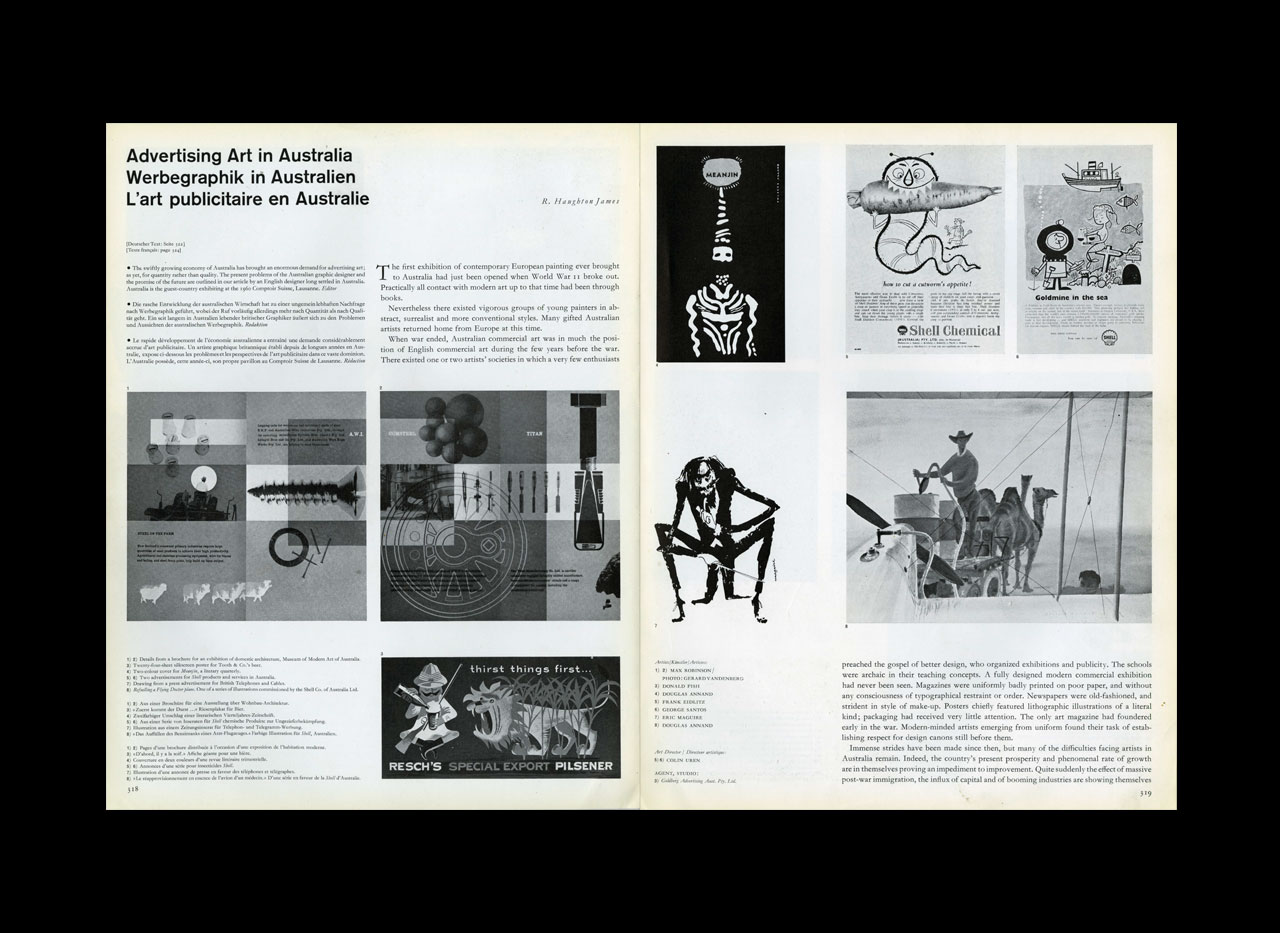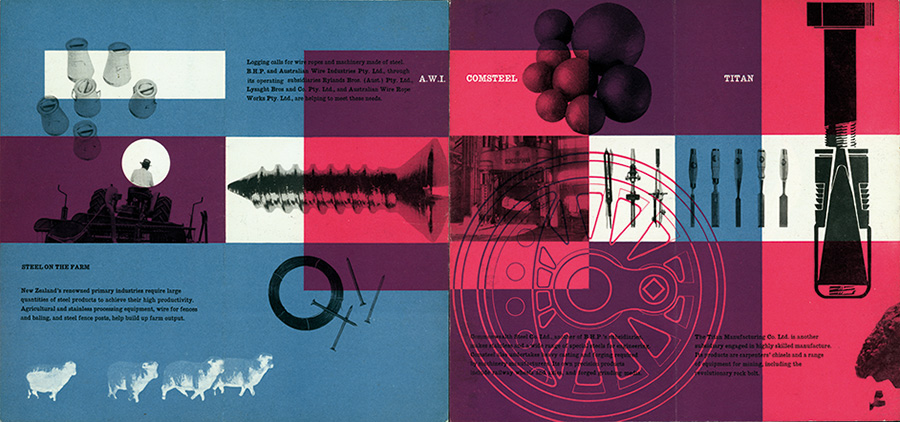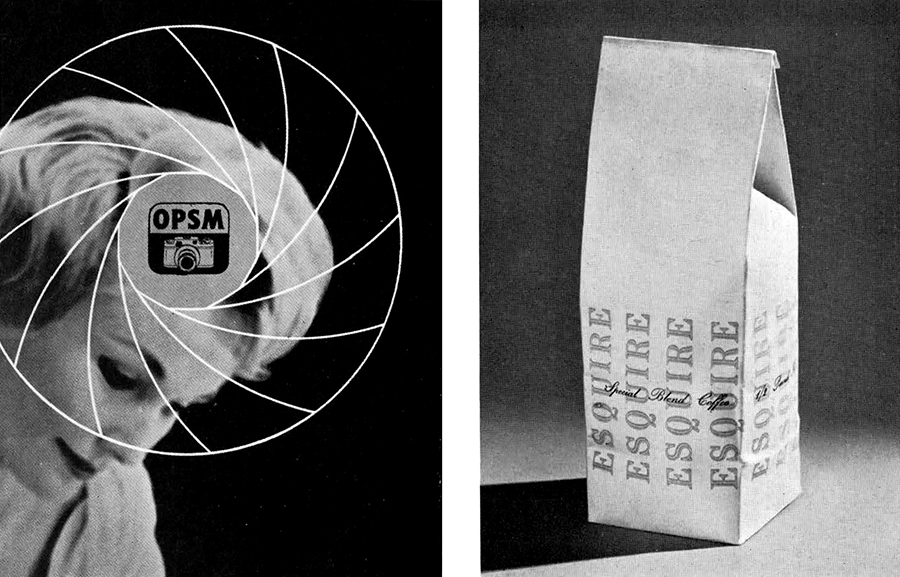
The first exhibition of contemporary European painting ever brought to Australia had just been opened when World War broke out. Practically all contact with modern art up to that time had been through books.
Nevertheless there existed vigorous groups of young painters in abstract, surrealist and more conventional styles. Many gifted Australian artists returned home from Europe at this time.

When war ended, Australian commercial art was in much the position of English commercial art during the few years before the war. There existed one or two artists’ societies in which a very few enthusiasts preached the gospel of better design, who organized exhibitions and publicity. The schools were archaic in their teaching concepts. A fully designed modern commercial exhibition had never been seen. Magazines were uniformly badly printed on poor paper, and without any consciousness of typographical restraint or order. Newspapers were old-fashioned, and strident in style of make-up. Posters chiefly featured lithographic illustrations of a literal kind; packaging had received very little attention. The only art magazine had foundered early in the war. Modern-minded artists emerging from uniform found their task of establishing respect for design canons still before them.

Immense strides have been made since then, but many of the difficulties facing artists in Australia remain. Indeed, the country’s present prosperity and phenomenal rate of growth are in themselves proving an impediment to improvement. Quite suddenly the effect of massive post-war immigration, the influx of capital and of booming industries are showing themselves in a forest of new city skyscrapers and a vast sprawl of new industrial and suburban development. Wages are high, and the demand for houses, cars and consumer goods is at an almost American level. Advertising is big business, and the demand for artwork is greater than can be met.
Newspaper typography still crudely competes with the advertising for the reader’s attention. Popular magazines achieve comparatively enormous circulations without benefit of exact colour registration. The bigger the magazine, the worse its layout; such magazines enjoy a practical monopoly. To newspapers the retailer is king. In no country do department stores purchase such vast amounts of space or fill them with so disorderly and ill-conceived advertising.
It is within this framework that the gifted or adventurous artist must achieve his successes.

The Australian businessman reflects the general innocence of the Australian public in matters of art. He can be sold good work, but unless it is relentlessly pressed upon him, he is indifferent to its absence.
There are signs, happily, that a turning-point is being reached. In other fields where circumstances allow it, the designer seems to carry his creative enthusiasm through to a triumphant conclusion. This is particularly striking in domestic architecture and in painting. In a brief tour through the suburbs of Sydney or Melbourne one may see scores of originally conceived and classically designed small homes.
Australia is bursting with energy, too busy, perhaps, to examine its aesthetic standards closely, but the promise of creative development is definitely there.